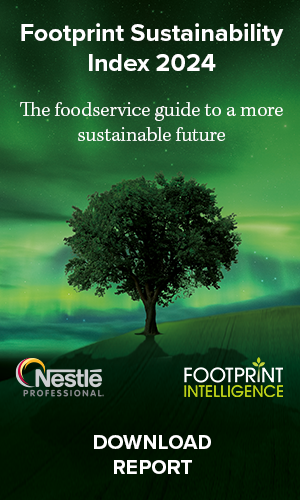Wrap has told supermarkets to remove packaging from uncut fresh produce, but is the sustainability case for selling loose watertight for all products? Nick Hughes reports.
The relationship between packaging and food waste is one of the harder sustainability puzzles businesses have to solve. It’s also a subject of significant disagreement and debate.
Take, for example, the case of uncut fresh produce. There are those who argue that wrapping products like cucumbers, broccoli and potatoes can extend shelf life and therefore help minimise waste in the home. For others, wrapping uncut fresh produce is fundamentally unsustainable since it risks encouraging people to buy more than they would otherwise need, creates packaging waste and does little to actually prolong the quality of the food.
A more nuanced view is that both of these opinions can be true depending on the specific circumstances. What has historically been lacking, however, is the evidence to show what produce should be wrapped, and when.
Step forward Wrap, which last month published the results of new research under the strident press release headline “sell fresh uncut produce loose”. It detailed an 18-month project, with input from the food industry, to examine the link between food waste in the home and the use of plastic packaging.
Wrap said the results “challenged accepted thinking that packaging helps to preserve fresh produce”. It went on to say that the research in fact showed that “selling loose has huge potential to reduce food waste in our homes”.
The charity tested five commonly wasted items – apples, bananas, broccoli, cucumber and potatoes – stored in the original packaging and loose, and at different temperatures. It found that selling the five loose and removing ‘best before’ dates could result in a combined saving of around 100,000 tonnes of food waste a year from UK households, more than 10,300 tonnes of plastic and 130,000 tonnes of greenhouse gas emissions.
For apples, potatoes and bananas, enabling people to buy the right amount for their needs was the most important factor behind the reduction in waste. For broccoli and cucumber, it was the removal of the best before date. For all of the products, the influence of packaging on shelf life was “minimal”, according to Wrap. This included cucumbers stored at both 4°C and 9°C in the fridge.
WRAP made three major recommendations for UK retailers: sell loose, remove best before labels, and help customers understand the benefits of storing appropriate fresh produce below 5°C in the fridge at home.
The press release, along with a short summary report released by Wrap, did include the caveat that retailers should sell uncut fresh produce loose “unless it can be shown that plastic packaging reduces overall food waste”. But the core message – that these foods should be sold unwrapped – appeared at the very least to be strongly implicit, and was largely reported as such in the national press.
In the case of cucumbers, however, there was a catch: buried in an accompanying 141-page technical paper was the statement that “the impact on household food waste of selling cucumbers loose and packaged is not clear cut, unlike the other four products”.
The report went on to say that the question of whether household food waste is lower for loose or packaged cucumbers depends on the range of sizes of cucumbers available. If smaller or half-size cucumbers are available, the research predicts a modest decrease in waste when sold loose; if not available, a modest increase.
This has led to some confusion within the industry about what Wrap is actually recommending and whether businesses should be removing packaging from cucumbers or not. As one food industry sustainability expert points out: “Although the [summary] report doesn’t explicitly say sell unwrapped cucumber, it does have images of unwrapped cucumbers all over it”.
The question has been further clouded by the fact that Wrap’s research did not include the impact on waste of packaging in the upstream supply chain, that is from farm to store. As the expert continues: “It’s all focused on ourselves, on households and on ideal customer behaviour. Well, customer behaviour is seldom ideal.”
Does wrapping work?
Growers’ representatives have historically argued that shrink wrap on cucumbers is necessary because it reduces moisture losses from the fruit, which typically contain more than 90% water, and also protects against damage during transportation.
Indeed, there is some evidence to suggest that when the upstream supply chain is factored in wrapping cucumbers becomes the more sustainable option. In 2012, the Co-op conducted a full-scale trial measuring the waste of wrapped and unwrapped cucumbers from two separate depots and found that wrapping the cucumbers reduced waste by two thirds.
Wrap did acknowledge the potential for supply chain conditions to impact sustainability outcomes, stating: “Retailers and suppliers will need to evaluate whether selling produce loose leads to an increase in food waste in the supply chain and retail outlets that outweighs the reduction in waste in the home – and work to find ways to overcome these issues.” But this more nuanced position is detailed in a longer evidence and insights report rather than the summary report or press release.
Perhaps it’s little wonder that confusion reigns.
In response, Helen Bird, strategic technical manager for plastics at Wrap, says the question about whether plastic packaging is necessary on cucumbers has a number of dependencies including the size, season and variety. She adds that under the UK Plastics Pact, Wrap is prioritising the removal of plastic packaging from uncut fruit and vegetables based on three factors: whether the removal of packaging will have a food waste benefit because it is frequently sold in multiple retail outlets, such as apples, potatoes, bananas; whether it is already sold loose by at least one major supermarket; and whether it is peelable, and therefore perceived hygiene concerns are less. It has identified 24 priority products, which include bananas, onions and mango but not cucumbers, however Bird says there is scope to review the use of plastic taking into account the above factors.
On the question of whether Wrap’s findings would likely change were the entire supply chain to be included in the scope of research, Bird says Wrap is asking retailers to remove primary plastic packaging unless it is demonstrated to lead to increased food waste overall. She adds they will need to consider all the food waste that arises, including in the home as a result of shoppers buying too much because it is sold in packaging.
Foodservice focus
As for the implications for foodservice operators, Wrap has made clear its research and recommendations are focused purely on retail.
Certainly the supply chains of the two sectors are very different. One key contrast with retail is that uncut fresh produce spends less time in the foodservice value chain than in a retail setting where produce may sit first on a supermarket shelf and then in a domestic fridge or cupboard for several days. “If it comes in this morning, it will probably be used today or tomorrow morning,” explains WSH director of sustainable business Mike Hanson.
It’s for this reason that quality date labels like ‘best before’ are rarely used for uncut fresh produce supplied to the foodservice sector, which tends to arrive loose into kitchens in recyclable cardboard boxes, according to Hanson.
And although Wrap’s research shows that storing certain types of fresh produce, both in and out of packaging, at an optimum temperature in the fridge can keep it fresher for longer – around 70 days in the case of apples – the turnover of foodservice stock is such that businesses are unlikely to derive much benefit from this extra shelf life.
As for the cucumber question, current practices reflect the fact that the longer a cucumber spends in the supply chain the more likely it is to be packaged. Hanson explains that cucumbers coming into WSH kitchens from Spain tend to come in plastic shrink wrap, but seasonal produce sourced locally in the UK would be delivered unwrapped.
This suggests there may be opportunity for caterers to reduce packaging by sourcing more produce locally during the UK growing season. However, in reality, Wrap’s own report notes how nearly all cucumbers in the UK are currently imported, with the majority imported from Europe.
The debate over the merits of packaging for uncut fresh produce will rumble on. Calls to sell loose wherever possible are surely a good thing – and well-intentioned – but perhaps what Wraps’s research best demonstrates is how sustainability is rarely a binary choice between a good outcome and a bad one.
Calls for the blanket removal of packaging may play well with campaigners – “finally some sanity in the crazy nanny-state world of food retailing”, said A Plastic Planet – but in a commercial setting there is still value in taking a more nuanced view.














